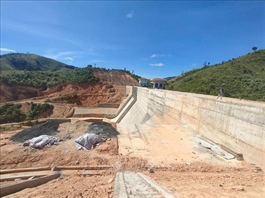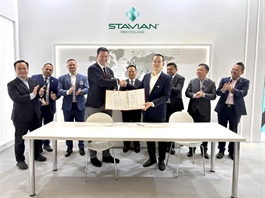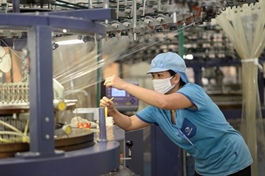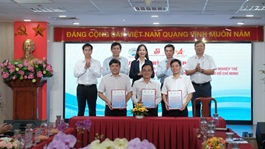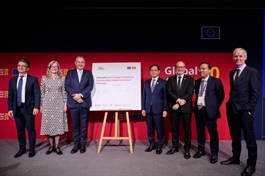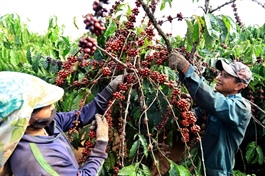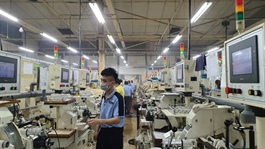Việt Nam emerges as a strategic hub in the next wave of trade corridors
Việt Nam emerges as a strategic hub in the next wave of trade corridors
The shift reflects a recognition that today's supply chains cannot be sustained by concrete and steel alone. They must be made resilient, transparent and technologically advanced.
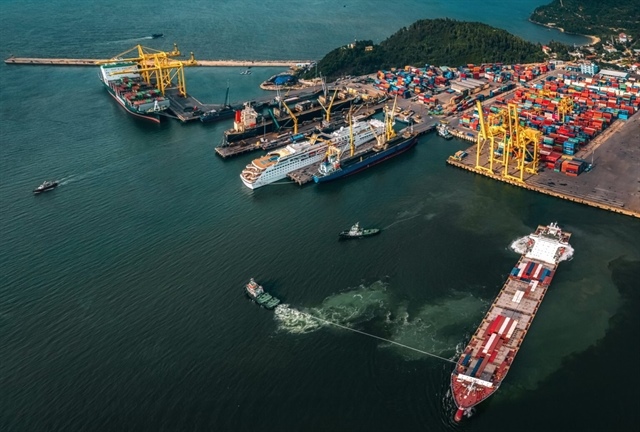
Vessels at Đà Nẵng Port. — Photo danangport.com |
In an era defined by shifting supply chains, rising geopolitical tensions and accelerating digitalisation, Việt Nam is stepping into the spotlight as a potential hub for the next generation of economic and logistics corridors.
Once seen simply as transport links that connect markets, these corridors are now being reimagined as complex ecosystems where infrastructure, finance, digital technology and harmonised regulation must work together.
Experts argue that the transformation of trade routes is no longer optional but inevitable.
Turgut Erkeskin, president of FIATA, told a panel discussion last week during the FIATA World Congress 2025: "These corridors are not about pitting routes against each other but about mutual reinforcement.
"For global supply chains to work seamlessly, we need the entire network to operate in concert."
The shift reflects a recognition that today's supply chains cannot be sustained by concrete and steel alone. They must be made resilient, transparent and technologically advanced.
One of the most significant breakthroughs lies in the digital domain. Zhanar Bagasharova, head of Programme Development at Global DTC (PSA Group), highlighted the Digital Trade Corridor platform that now links ports, railways, customs and logistics systems across 12 countries.
This platform has reduced customs transit times from eight hours to just 30 minutes while enabling real-time cargo tracking.
"Digital transformation not only brings efficiency but also builds trust through transparency and reliability," Bagasharova said.
Technologies such as blockchain and AI are increasingly seen as indispensable tools to secure the 'smart, green and low-risk' logistics networks demanded by global trade.
Soft infrastructure
But technology alone cannot remove the frictions that slow cross-border movement.
Experts emphasised the need for legal harmonisation, a "soft infrastructure" that standardises regulations, customs procedures and data protocols across borders.
Fedor Kormilitsyn, an economic affairs officer in transport division of ESCAP, warned that gaps in legislation and technical standards still hinder corridor efficiency.
"Asymmetries in digital maturity and environmental regulations can slow down the benefits of connectivity," he said.
Drawing from Europe’s Trans-European Transport Network (TEN-T), Francesco Parisi, chairman of Francesco Parisi Group, stressed the importance of aligning rules and procedures before investing heavily in physical works.
He also noted that a network of smaller, parallel corridors may be more resilient than a single large one, since redundancy helps cushion against disruptions.
Beyond the legal framework, funding models and incentives play a decisive role.
Dr Nguyễn Bá Hùng from the Asian Development Bank (ADB) in Việt Nam said that infrastructure projects cannot stand alone. They need public-private partnerships (PPPs), supply chain finance and trade policy tools such as free trade zones to become fully operational.
"A corridor can't run on concrete and steel alone," he said, calling for mechanisms that allow small and medium-sized enterprises to access financing and plug into the global value chain.
Việt Nam's pivotal role
Việt Nam, with its expanding role in Southeast Asian logistics, is positioned as a central hub in this emerging corridor map.
Đà Nẵng, especially after its merger with Quảng Nam Province, has become a city-region with nearly 12,000 square kilometres of land and over three million residents, primed for industrial and logistics development.
The city already hosts two international ports, two airports and a railroad system linking it to Laos, Thailand and Myanmar. Construction is underway at the Liên Chiều deep-sea port, designed to handle 100,000 DWT vessels, alongside a 19,000-hectare free trade zone.
"Đà Nẵng is ready to be a strategic transit point on the region’s logistics map and a trusted partner for global investors," said Trần Chí Cường, Vice Chairman of Đà Nẵng People’s Committee.
Yet challenges remain. Delays in customs clearance, sometimes up to two weeks, have raised concerns among international players.
The ADB noted that Việt Nam is pursuing broad logistics reforms but urged businesses to share more data to help shape effective policy.
The future of economic corridors in Southeast Asia will depend on whether countries like Việt Nam can synchronise infrastructure, policy, finance, and technology.
If they succeed, trade routes will evolve from simple connectors of markets into dynamic systems - sustainable, digital and resilient - capable of anchoring the region’s integration into global supply chains.
- 13:35 13/10/2025



